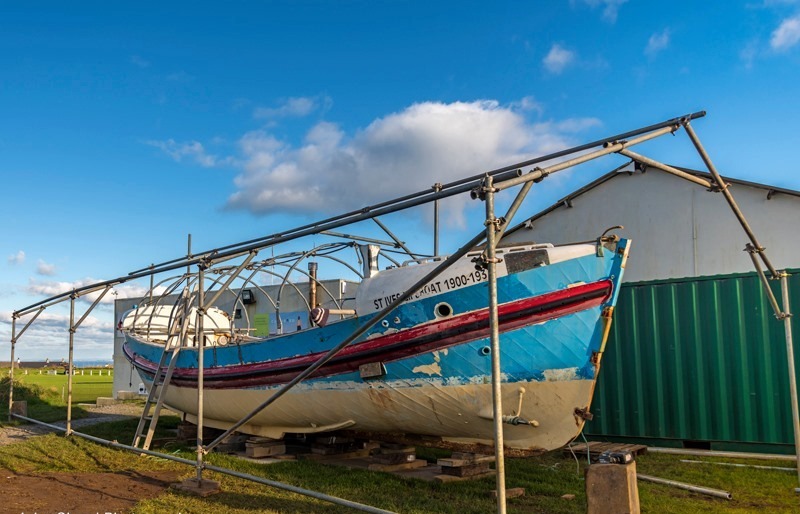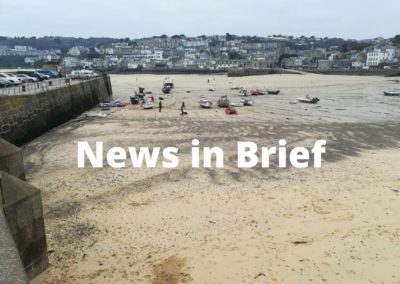The James Stevens No 10 on the water. Photographs: John Chard
Going to sea in a modern lifeboat in all weathers is a big enough challenge. Imagine setting out to save lives in a 37ft open boat which had to be rowed. That’s what the crew of the James Stevens No 10 had to do when the vessel was in service in St Ives between 1900 and 1933. But what happened to her after that?
The truth is that we don’t accurately know, but St Ives RNLI’s mechanic and second coxswain, Robin Langford, also a shipwreck researcher and maritime antique specialist, has traced as much of her history as he can, and is leading a restoration project to get her back in the water at St Ives this year.
The vessel was one of 20 lifeboats purchased by the RNLI from an 1894 legacy of Birmingham property developer James Stevens. He left £50,000 all to that charity — worth £6,400,000 today.
Built by the Thames Ironworks and Shipbuilding and Engineering Company in 1899, James Stevens No 10 was transported by train to Hayle, from where she was launched, before taking up duty in St Ives. During her service she saved 227 human lives, and those of two dogs. She was replaced in 1933 by the Caroline Parsons and went on to be a pleasure boat, working St Ives Bay and Seal Island. Then, during the Second World War, she disappeared. “I think she was used at Dunkirk, and I’m researching that at the moment,” says Robin.
She re-appeared at Walton-on-the-Naze, Essex, now re-named the Patricia Mary, and was purchased by a Colonel Hawkes, commander of the Colchester Military Garrison, who converted her into a houseboat. After he died, the vessel was surveyed — clearly not very competently, as shortly afterwards, she sank. She ended up in a boatyard at Walton, where, despite her new name, a lifeboat enthusiast realised this was the James Stevens No 10. He wrote to St Ives RNLI, and a letter about the discovery was carried in the Times & Echo. A Cornish businessman encouraged his son to purchase the boat and renovate it, which they did in 2002. It became a pleasure boat once again for several years, then was replaced by a faster vessel, ending up at Dynamite Quay, Hayle.

The James Steven No 10 getting ready for repair in Hayle
“I tried to negotiate the purchase of her for several years, from the then current owner,” says Robin. “However, he then sold her to a chap in Scarborough.” The new owner then put the vessel on eBay after being quoted £4,000 to transport her back to Yorkshire. “I then negotiated the purchase off him after the highest bidder on eBay did not pay for the lifeboat.”
Robin purchased the James Stevens No 10 on his 50th birthday and now heads a group gradually bringing her back to seaworthiness with the intention of getting her back in the water in her home port. The plan is to restore, refit and re-engine her. She will then offer educational passenger trips around St Ives Bay, and any profit raised will go into other local community projects. She will hopefully also offer free educational trips for local schoolchildren.
The restoration has also been supported by several local businesses and many keen individual supporters of the project. “With all her history she has to stay in St Ives,” says Robin. To find out more, and to support the project, search for ‘lifeboat James Stevens No 10’ on Facebook and Instagram, and watch this website.


